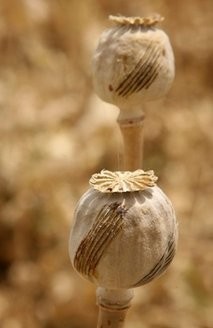
PARIS (AFP) – Researchers have discovered the genes that allow the opium poppy to make codeine and morphine, according to a new study.
The findings could lead to engineered plants and microorganisms that efficiently make codeine, one of the most widely prescribed painkillers in the world, the researchers said.
Unlike morphine, codeine cannot be easily converted to heroin.
"The enzymes encoded by these two genes have eluded plant biochemists for a half-century," said Peter Facchini, a professor at the University of Calgary in Canada and co-author of the paper.
"In finding not only the enzymes but also the genes, we've make a major step forward," he said in a press release.
Opium poppy remains the world's dominant source of codeine, morphine and another opiate called oxycodone, according to the study, published Sunday in Nature Chemical Biology.
In clinical medicine, morphine is often regarded as the drug-of-first-choice to relieve severe pain and suffering.
Codeine can be extracted directly from the opium plant, but mostly it is synthesised from the much more abundant morphine found in the opium poppy.
Most morphine produced for pharmaceutical use around the world is converted into codeine.
Once ingested, codeine is converted by an enzyme in the liver to morphine, which is the active painkiller and a naturally occurring compound in humans.
"With this discovery, we can potentially create plants that will stop production at codeine," said Facchini.
"Our discovery now makes it possible to use microorganisms to produce opiate drugs and other important pharmaceuticals."
Co-author Jillian Hagel, a post-doctoral scientist in Facchini's laboratory, used cutting-edge sequencing techniques to sift through some 23,000 different genes to find the one -- codeine O-dementhylase (CODM) -- that produces the plant enzyme which converts codeine into morphine.
"We have found the missing pieces that were needed to understand how the opium poppy makes morphine," she said.
The opium poppy has been grown and exploited for thousands of years for both its medicinal and mind-altering properties.
Morphine was isolated in the early 19th century, while codeine was first identified in 1832 by French chemist Pierre Robiquet.
























